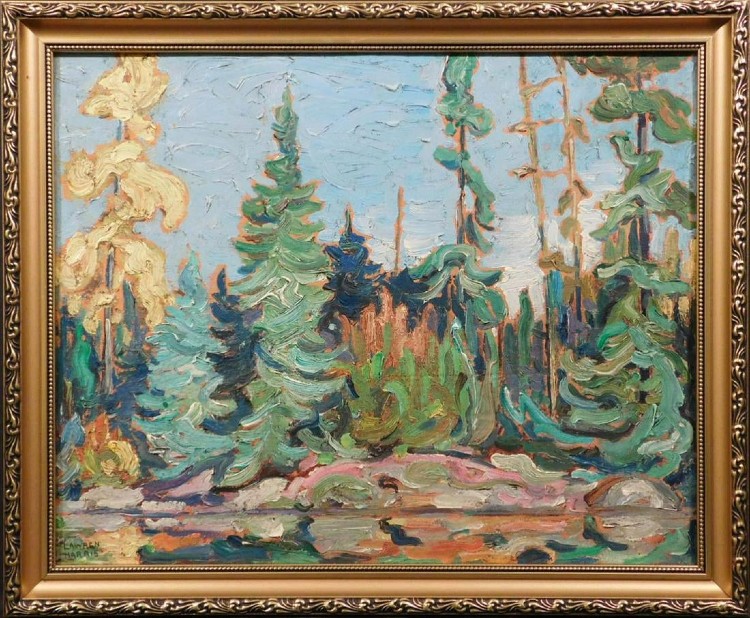
NEW YORK – Marking a dramatic shift away from European-influenced artwork, the Group of Seven redefined Canadian art. Also known as the Algonquin School, these seven Canadian landscape painters created the first major Canadian national art movement.
Interestingly, while they are most well known for their striking rural landscapes of Canada’s North, the artists were based in Toronto, the country’s largest urban city at the time. The group was active from 1920 to 1933 and its artwork was acclaimed worldwide in its time and is still popular today.
The McMichael Canadian Art Collection, which holds a major collection of these works, notes that the group broke from European artistic tradition in favor of exploring the singular character of Canadian landscape through art in a new manner. “Collectively they agreed: Canada’s rugged wilderness regions needed to be recorded in a distinctive painting style.”
The Group of Seven originally consisted of Franklin Carmichael (1890–1945), Lawren Harris (1885–1970), A.Y. Jackson (1882–1974), Frank Johnston (1888–1949), Arthur Lismer (1885–1969), J.E.H. MacDonald (1873–1932), and Frederick Varley (1881–1969). In 1926, A. J. Casson (1898–1992) was invited to join, followed four years later by Edwin Holgate (1892–1977) and LeMoine FitzGerald (1890–1956) in 1932.
“Believing that a distinct Canadian art could be developed through direct contact with nature, the Group of Seven is best known for its paintings inspired by the Canadian landscape,” according to the Group of Seven website.
Auction prices are typically robust for these artists with works highly sought after. In recent years, attention has been refocused on the group and several of its leading artists through museum exhibitions such as “The Idea of North: The Paintings of Lawren Harris,” organized by the Hammer Museum in 2016, which traveled to a number of institutions. “His scenes of an evocative northland, isolated peaks and vast expanses of shimmering water are considered essential images of the country,” according to the Museum of Fine Arts, Boston, one of the hosting museums. Harris was well known for organizing train “boxcar” trips for him and Group artists to canvas the wide Canadian countryside to paint remote or interesting locations. The boxcar functioned as a traveling artists studio and they could hitch up to other trains at their convenience.
Friends with Harris long before the Group of Seven was formed, J.E.H. MacDonald and Harris often painted together and shared similar ideology. A 1913 trip that the two took to the Albright Art Gallery in upstate New York to see Scandinavian landscapes opened their eyes to the opportunities for Canadian painters to create a new style of work. Despite early criticism from art critics used to seeing muted tones in Canadian art, Macdonald was soon celebrated for his command of vibrant color and brushwork, such as in one of his most renowned paintings, Mist Fantasy. That painting was the result of one of these boxcar trips to northern Ontario. A serigraph of this work seen here sold for CA$700 + the buyer’s premium at Dominion Auctions in June 2020.
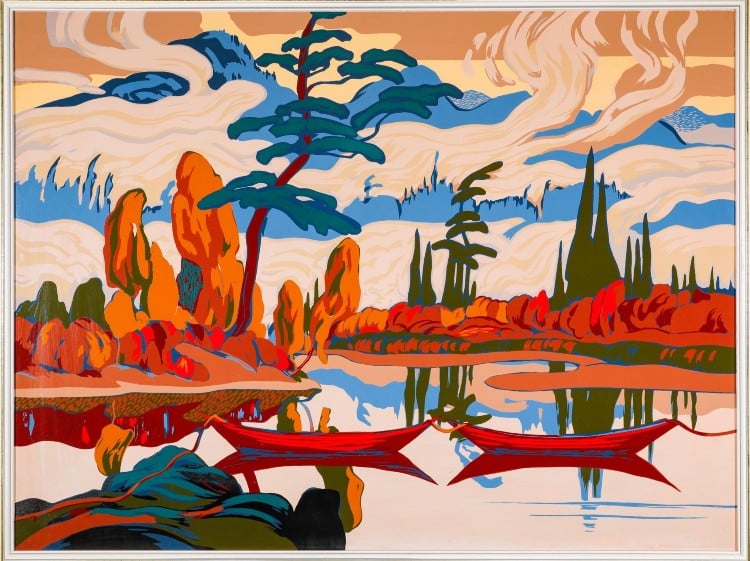
Serving in World War I, Frederick Horsman Varley was commissioned as an official war artist (one of several to do so among the Group) but whether he was documenting the war or landscapes, he saw art as a spiritual vocation. While many of the paintings from the Group of Seven featured landscapes devoid of people, Varley had a strong interest in the figure and he was largely renowned as a portrait painter, such as in this acclaimed self-portrait. He held his own as a landscape painter, though, with such powerful works as the 1920 oil, Squally Weather, Georgian Bay (1921) or the mountainous landscape seen here.
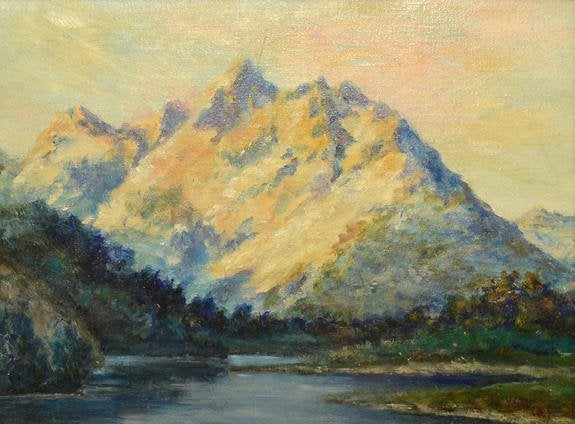
Franklin Carmichael was the youngest artist to be inducted into the Group and had been artistically inclined since he was a child. Lyrical works bathed in color and atmospheric light were his wheelhouse, such as this painting seen here, Port Coldwell, Lake Superior. Arguably, the master within the Group of the watercolor medium (save Casson), he particularly excelled in the shading between light and shadow.
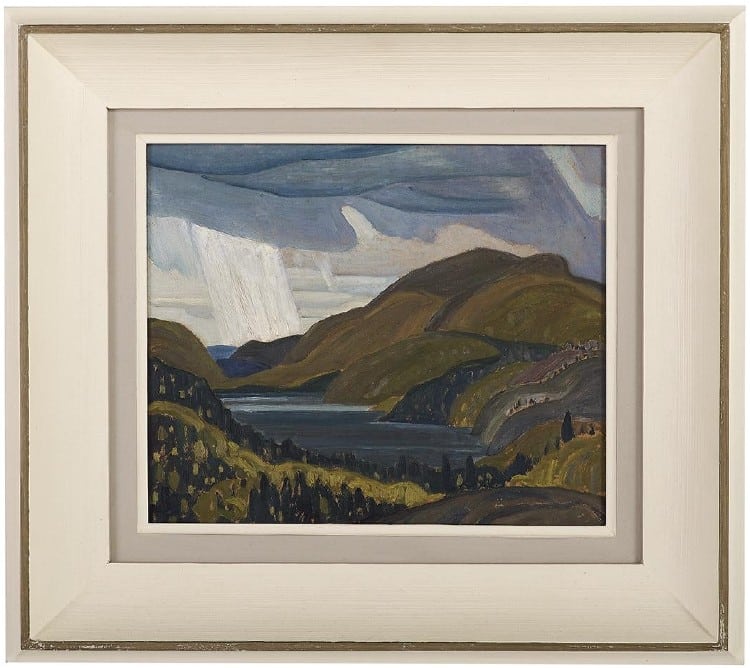
Like Varley, A.Y. (Alexander Young) Jackson was also a war artist and he was a key figure in the group for uniting the artists of Montreal and Toronto. “Jackson continued to play an influential role in Canadian art, and from 1943 to 1949 he taught at the Banff School of Fine Arts,” according to the National Gallery of Canada. The artist was described as a tireless explorer seeking out locations not previously painted, from snowy Quebec scenes to Alberta’s rolling prairies.

Although an original Group member, Frank Johnston had a short tenure here. While he was included in the Group’s inaugural exhibition in 1920, by the next year, he had moved onto the Winnipeg School of Art. While his early works show a more idealized version of landscapes, his style evolved in later years moving toward a higher level of realism and a fascination with the interplay of light on landscapes.

According to the Jean-Pierre Valentin Gallery, English-born Arthur Lismer migrated to Toronto at about age 25 and said sketching trips to Algonquin Park in the Canadian bush were “turning points” in his life. Fascinated with the ruggedness of northern Ontario, he was quoted in 1925 as saying. “Nature is not beneficent … It is ruthless, with a strange, savage beauty, tearing down as well as building up, but destroying that it might create anew.” This image seen here of a forest in the British Columbia province in the furthest western regions of Canada is a fine example.
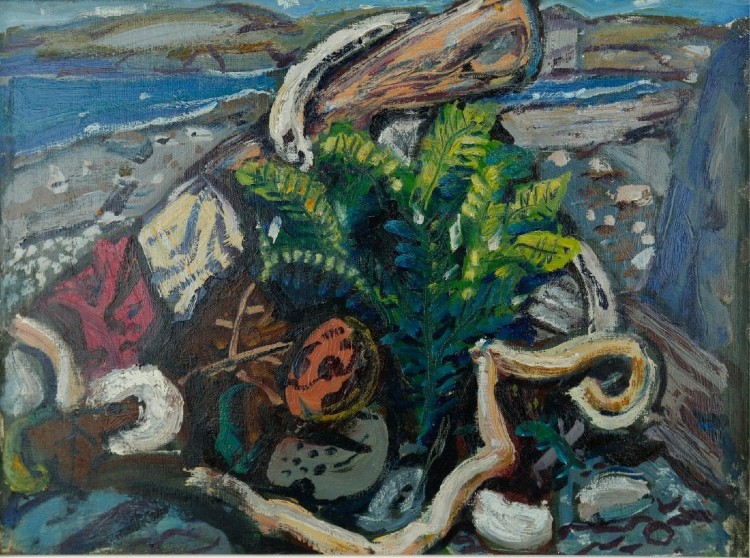
The Group of Seven may itself had a short tenure, about a dozen years, but its lasting legacy on Canadian art has stood the test of time over the years. Its groundbreaking style has influenced a generation of artists from Henrietta Mabel May to contemporary artists working today.



